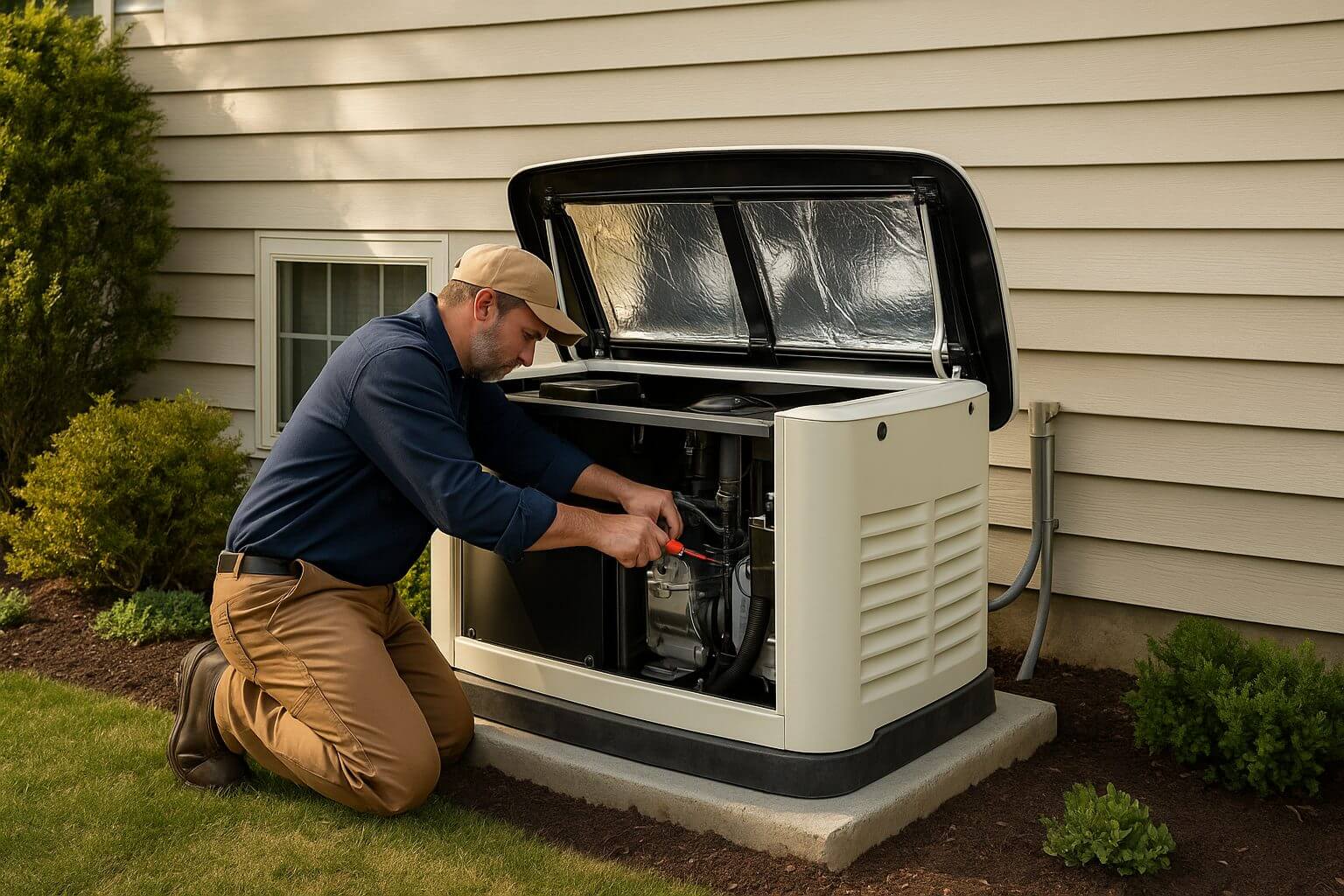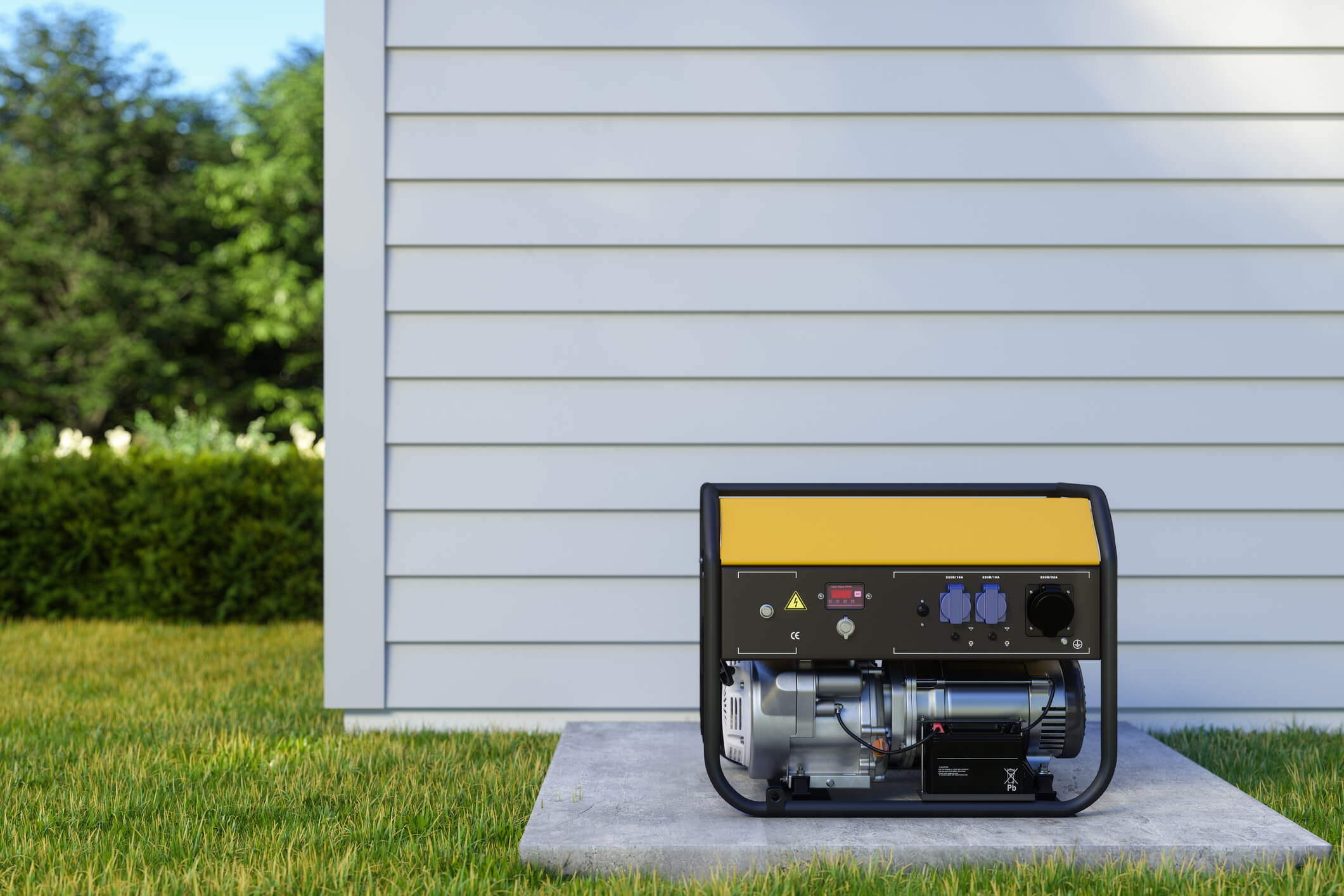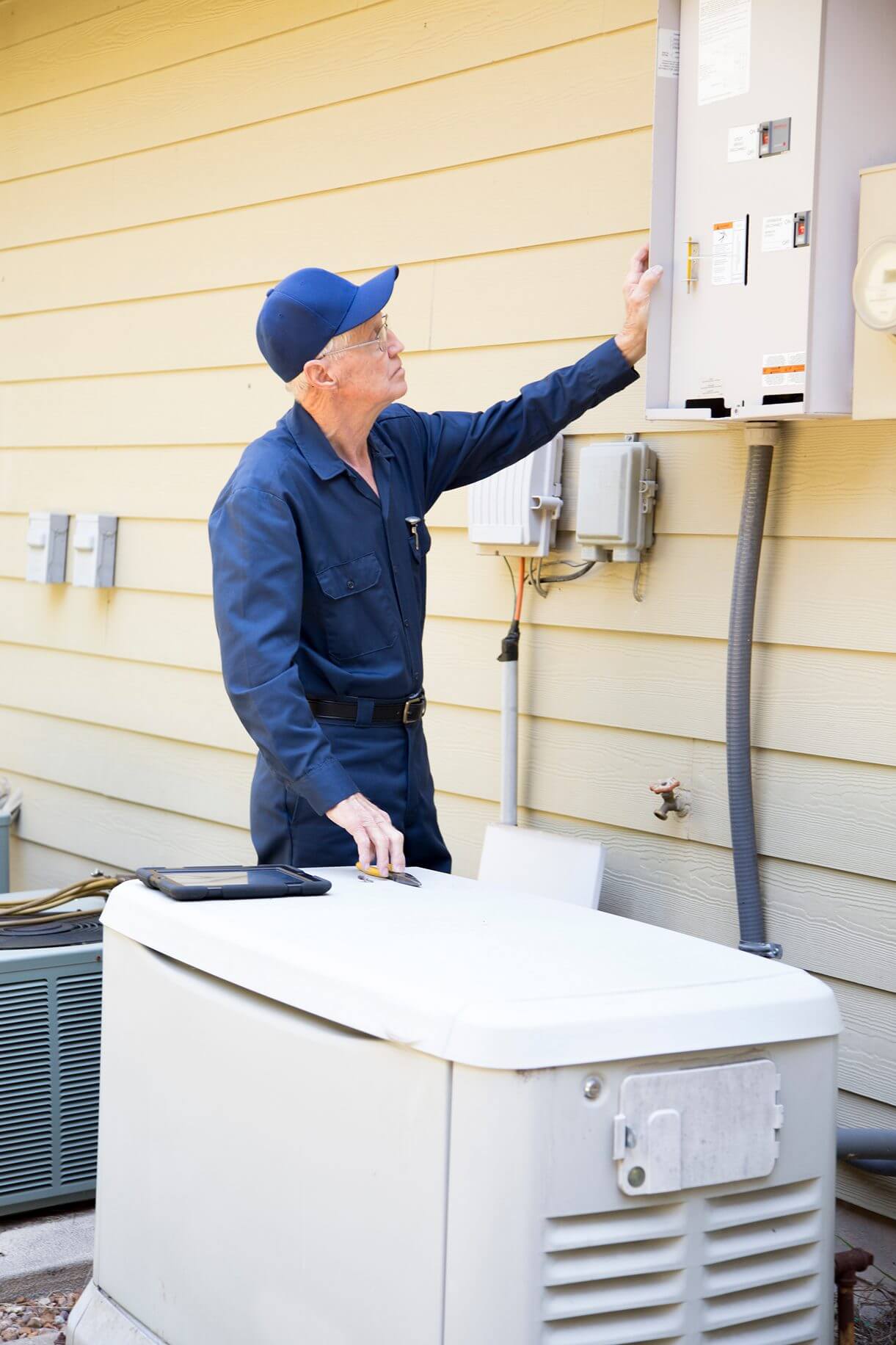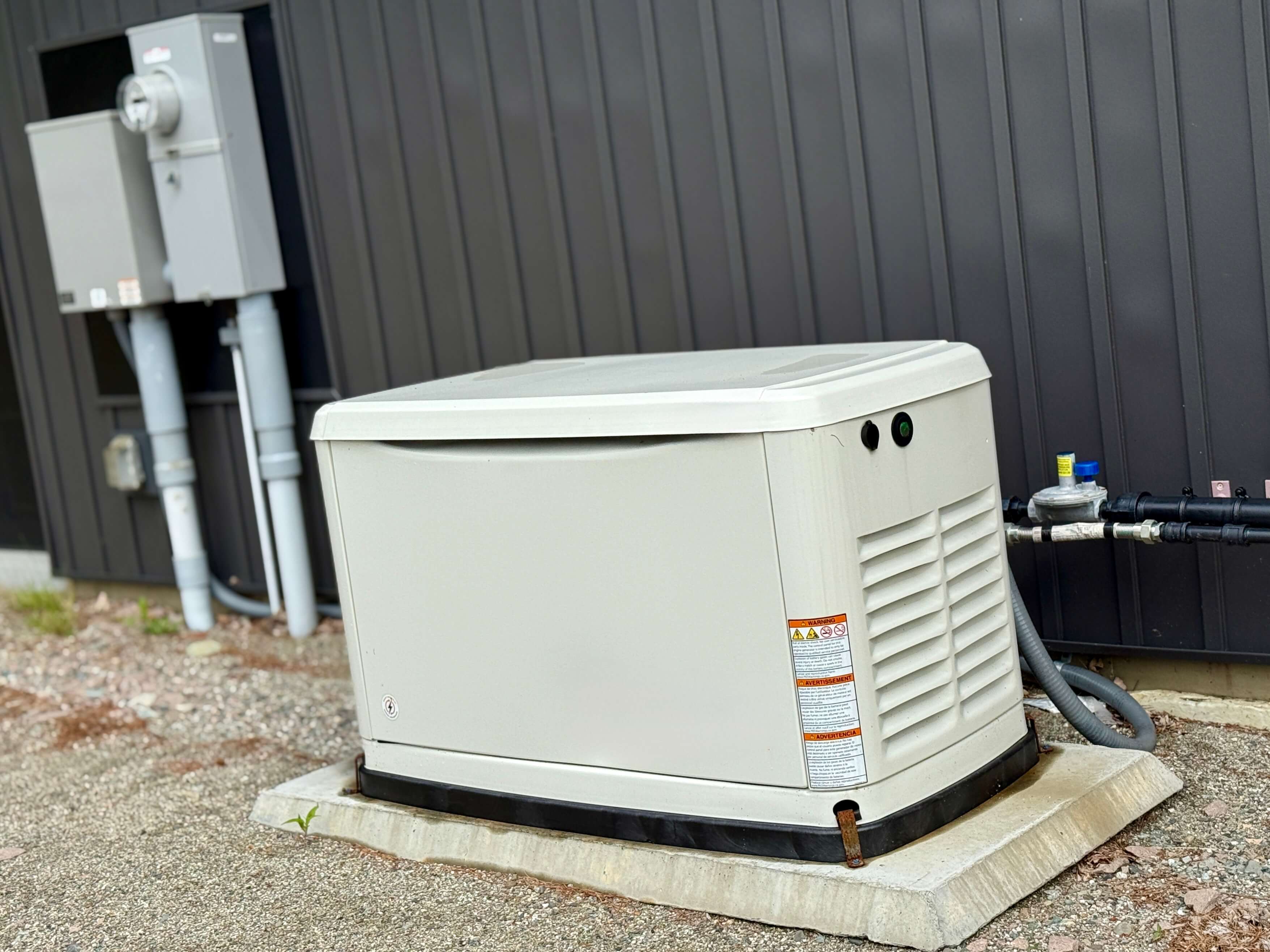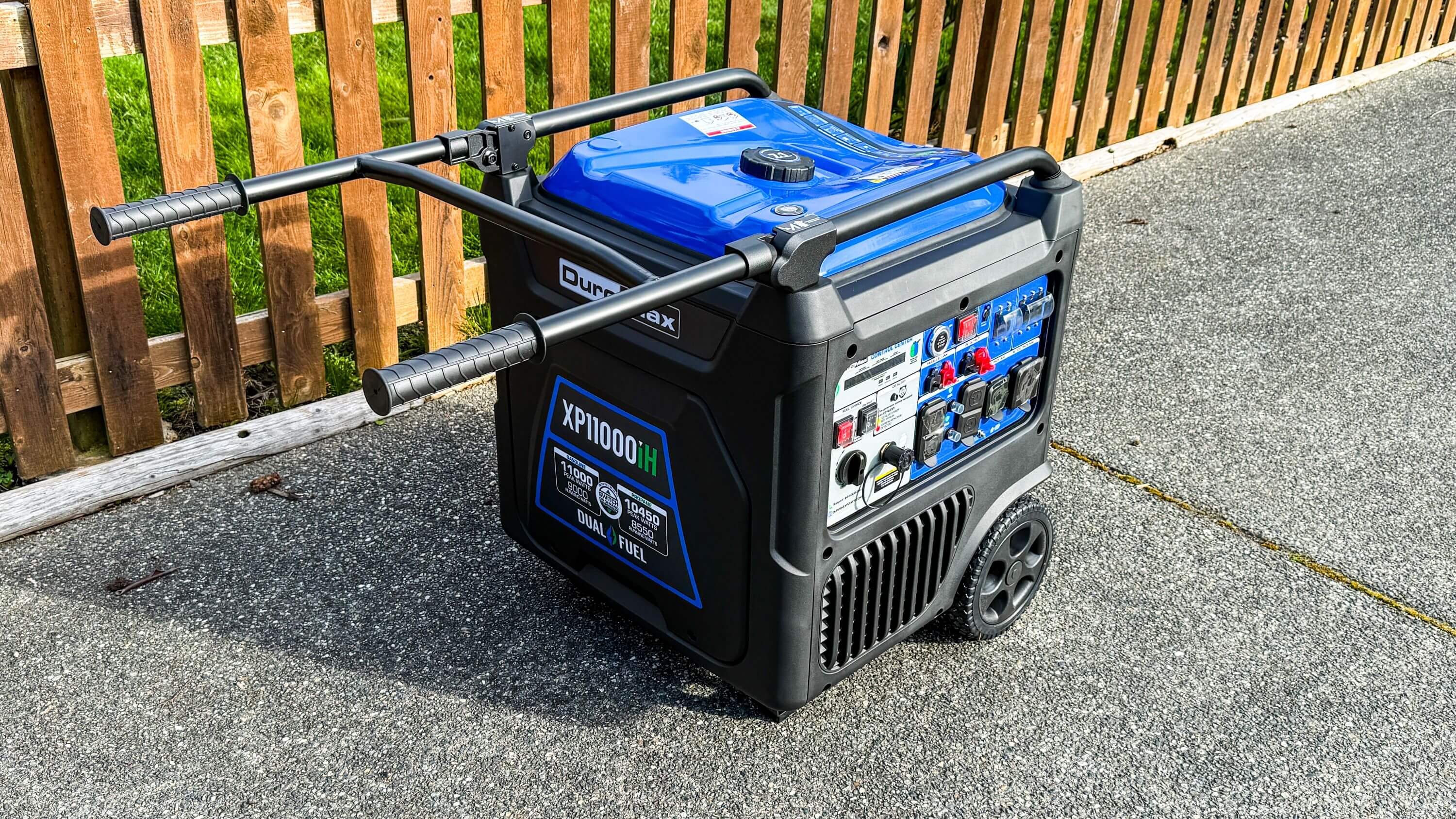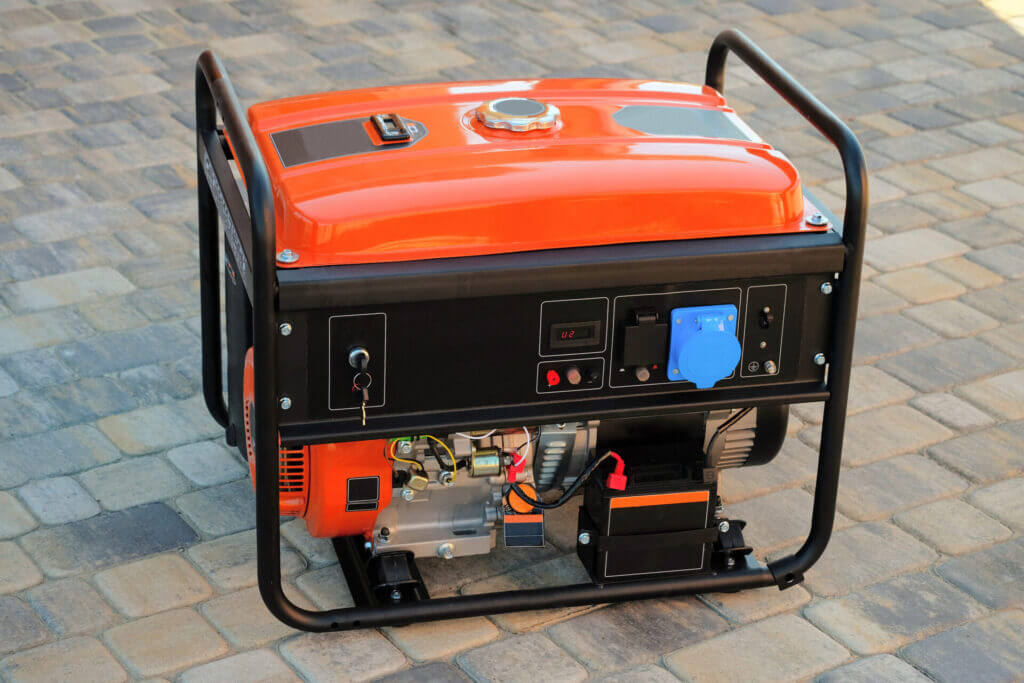Why Proper Generator Installation Matters
Installing a generator means working directly with your home’s electrical and fuel systems—two areas where mistakes can have serious consequences. Improper wiring can damage appliances, overload circuits, or even send dangerous voltage back through utility lines. Poor placement can allow carbon monoxide to enter the home, and inadequate grounding or weather protection can shorten the unit’s lifespan.
A proper installation ensures your generator is safe, code-compliant, and ready to perform when you need it most. It protects your investment by keeping manufacturer warranties intact, satisfies local permitting requirements, and guarantees that safety features like transfer switches and shut-off valves work as intended. In short, installation quality is the foundation of long-term reliability.
Key risks of an improper installation include:
- Creating electrical hazards such as backfeeding power into utility lines, endangering utility workers.
- Allowing carbon monoxide into the home if placed too close to openings.
- Increasing fire hazards from incorrect fuel storage or faulty wiring.
- Voiding warranties if manufacturer guidelines aren’t followed.
Professional installers are trained to follow both the National Electrical Code (NEC) and local building requirements, ensuring your system is safe, efficient, and fully compliant.
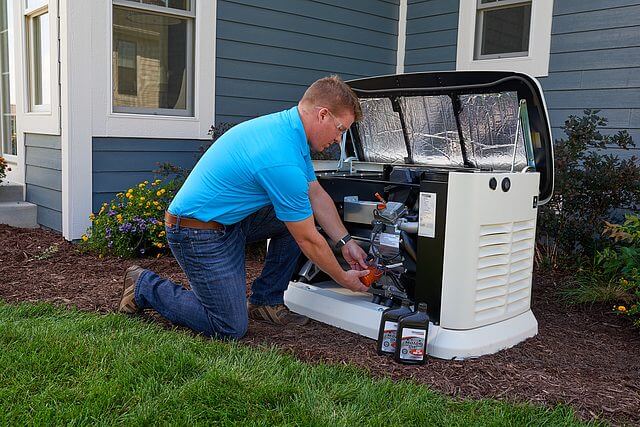
DIY vs Professional Installation
Whether you can install a generator yourself depends largely on the type of generator, the complexity of the connections, and local regulations. Portable generators that plug directly into appliances or a pre-installed inlet with a manual transfer switch can often be set up safely by homeowners. These simpler systems don’t require direct wiring into the main electrical panel or modifications to fuel lines, making them manageable for those comfortable with basic electrical safety.
Whole-home standby generators are a different story. They involve high-voltage wiring, integration with your electrical panel, and connection to a permanent fuel source, which are tasks that require permits, inspections, and professional-level expertise. In most areas, code compliance and manufacturer warranty terms both require a licensed electrician or certified installer to handle the work.
When DIY Can Work
- Using a portable generator to run a few appliances via extension cords.
- Connecting a portable or inverter generator to a home circuit using a pre-installed manual transfer switch or approved interlock kit.
- Operating only with no direct connection to the home’s wiring, plugging devices in directly.
When to Call a Professional
- Installing a standby generator that connects directly to your electrical panel.
- Adding or modifying natural gas or propane lines.
- Installing an automatic transfer switch for seamless operation.
- Completing any project requiring electrical permits, fuel permits, or compliance inspections.
Bottom Line
Standby installations involve complex wiring, fuel connections, and load calculations. Mistakes in these areas can result in costly damage, unsafe conditions, or failure during a real outage.
Step-by-Step: How a Professional Installs a Standby Generator
Installing a standby generator is a multi-stage process that combines electrical work, fuel system setup, and compliance with local building codes. Each stage builds on the last, ensuring that your generator will operate safely, reliably, and efficiently when it’s needed most. While the exact process can vary based on generator type and home layout, most professional installations follow these core steps.
Site Assessment and Permitting
The installer begins by evaluating your home’s electrical capacity, fuel source options, and the best location for the generator. This assessment ensures the unit will meet your power needs and comply with safety standards. At this stage, the installer also secures all necessary permits, which may include electrical, fuel, zoning, or HOA approvals.
- Evaluate your home’s electrical system, fuel source, and ideal generator location.
- Obtain permits for electrical work, fuel hookups, and zoning or HOA approval.
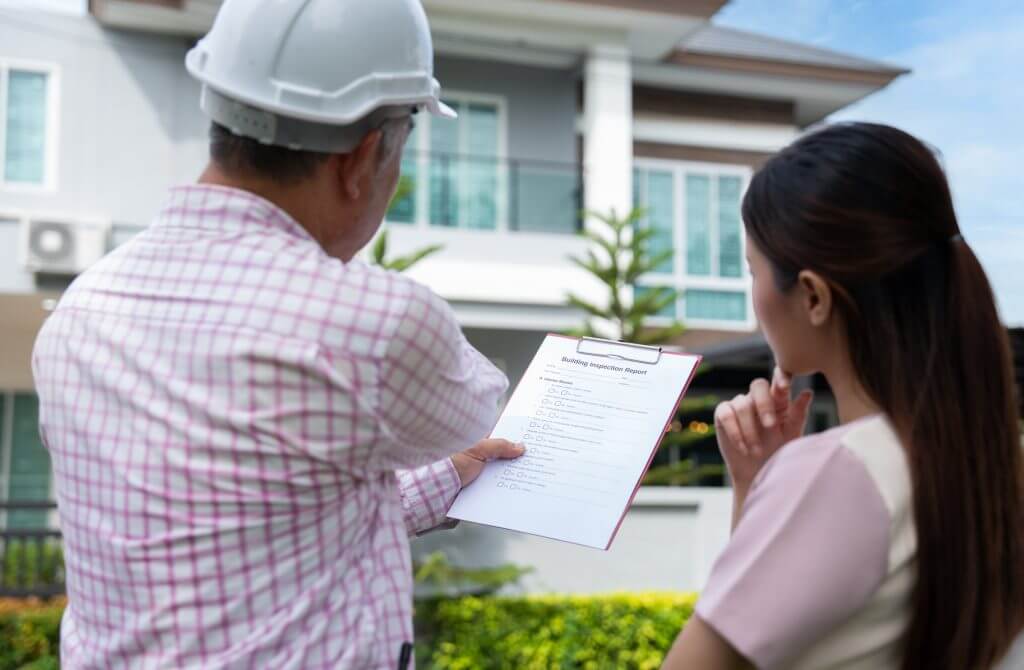
Selecting the Location
The generator must be placed on a stable, level surface with proper ventilation. It’s typically installed on a concrete pad or compacted gravel base. Minimum clearances are important—at least 5 feet from any doors, windows, or vents, and at least 18 inches from walls or structures. The site should also allow easy access for maintenance and repairs.
- Choose a stable, level, well-ventilated location.
- Place on a concrete pad or compacted gravel base.
- Maintain at least 5 feet from openings and 18 inches from walls.
- Ensure easy access for maintenance.
Preparing the Site
Before installation, the ground is leveled and compacted to create a stable foundation. The pad is set in place, and proper drainage is established to prevent water pooling around the generator. This step ensures both safety and long-term durability.
- Level and compact the soil.
- Install the generator pad.
- Create drainage to prevent water pooling.
Electrical Connection
A manual or automatic transfer switch is installed to safely switch the home between utility power and generator power. The installer runs wiring from the generator to the transfer switch and into your main electrical panel. Circuits are then connected according to your chosen coverage, whether powering the entire home or just essential circuits.
- Install a transfer switch to isolate utility and generator power.
- Run wiring from the generator to the switch and main electrical panel.
- Connect circuits based on whole-home or essential-only coverage.
Fuel System Setup
The fuel system is connected according to the generator’s design. For natural gas, a line is run from the utility connection to the unit. For propane, a tank is installed or connected, complete with shut-off valves and regulators. Diesel units are paired with a secure, filtered tank, and in cold climates, fuel treatments may be added to prevent gelling.
- Run natural gas lines from the utility connection.
- Install propane lines from a tank to the generator with shut-off valves and regulators.
- Install and secure diesel tanks with filtered fuel lines.
System Testing and Inspection
Once installation is complete, the generator is started and tested under load to ensure it can power the intended circuits smoothly. Safety devices and monitoring systems are checked for proper operation. Finally, a local inspector reviews the installation to verify it meets all applicable codes before approving the system for use.
- Start and test the generator under load.
- Check safety devices and monitoring systems.
- Obtain final inspection approval.
Safety Considerations During and After Installation
- Carbon Monoxide Prevention: Operate generators outdoors, never in enclosed spaces. Install CO detectors inside your home.
- Grounding: Ensure the generator is grounded according to NEC requirements to prevent electrical shock hazards.
- Fuel Storage Safety: Store gasoline and diesel in approved containers away from heat sources. Keep propane tanks upright and in ventilated areas.
- Weather Protection: Consider a weatherproof enclosure or canopy for portable units.
How Much Does Generator Installation Cost?
| Component | Typical Cost |
|---|---|
| Generator Unit (8 to 14 kW) | $3,000 to $4,500 |
| Generator Unit (16 to 22 kW) | $4,500 to $6,500 |
| Generator Unit (24 kW+) | $6,500 to $12,000+ |
| Transfer Switch | $500 to $1,200 |
| Installation Labor | $1,800 to $5,500+ |
| Fuel Tank Installation | $600 to $3,500 |
| Permits and Inspections | $100 to $500 |
| Annual Maintenance | $150 to $450 |
Total Installed Cost: Most whole-home standby systems fall between $8,500 and $23,000, though high-capacity units with complex fuel or electrical setups can exceed $25,000.
Choosing the Right Installer
When hiring a pro, look for:
- Licenses and Certifications: Electrical, plumbing, and manufacturer-specific training.
- Experience With Your Fuel Type: Not all installers handle propane, diesel, and natural gas equally.
- Proof of Insurance: Protects you if something goes wrong during installation.
- References and Reviews: Positive feedback from recent customers.
- Clear Written Quote: Itemized for equipment, labor, permits, and additional work.
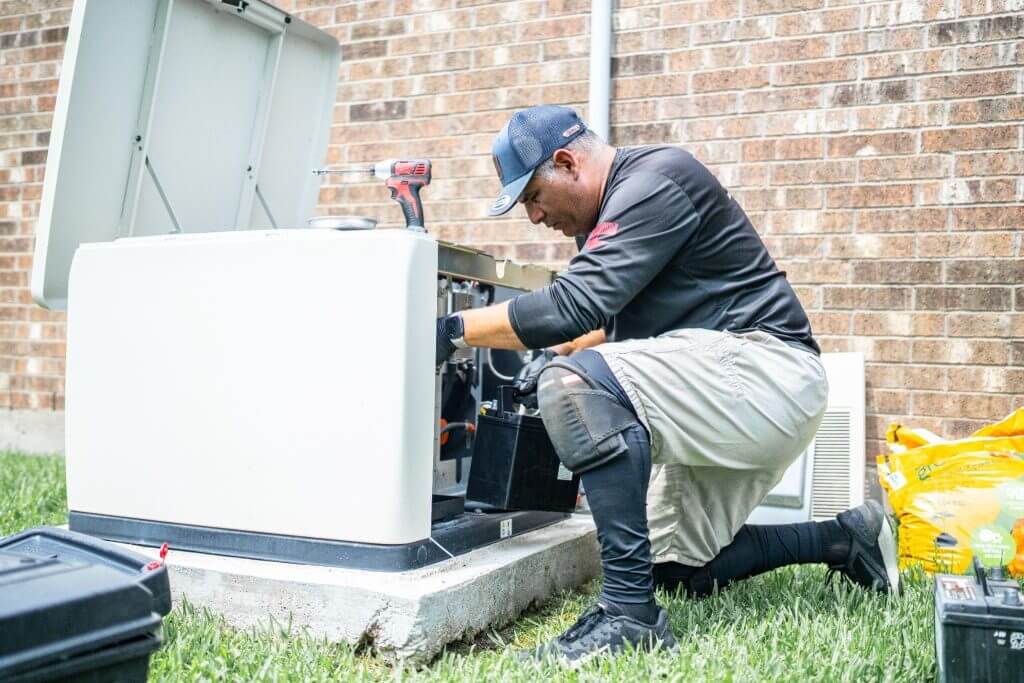
Questions to Ask Your Pro
When you’re getting bids for a generator installation, asking the right questions can help you compare quotes, avoid unexpected costs, and make sure you end up with a system that’s safe, efficient, and tailored to your home.
- Which Generator Size Do You Recommend for My Home?
An experienced installer can assess your electrical panel, typical energy use, and outage priorities to recommend the right capacity. Ask them to explain how they calculated the size so you understand the reasoning behind their choice.
- What Fuel Type Makes the Most Sense Here?
Fuel availability, pricing, and delivery options vary by location. Your installer should be able to explain the pros and cons of natural gas, propane, diesel, or dual-fuel systems based on your property and local supply conditions.
- Will My Electrical System Need Any Upgrades?
Some homes require additional work, such as panel upgrades, new breakers, or wiring changes, before a generator can be connected. Ask about these potential costs early so you can budget accurately.
- What Type of Transfer Switch Do You Recommend?
Transfer switches are essential for safely switching between utility and generator power. Ask whether a manual or automatic switch is better for your needs, and how the circuits will be configured to match your backup priorities.
- Are There Local Codes or HOA Rules I Should Know About?
Some municipalities and homeowner associations have rules about generator placement, noise, and appearance. Your installer should know these requirements and help you choose a compliant location.
- Who Handles Permits and Inspections?
Permits are often required for both electrical and fuel connections. Find out whether your installer will secure them on your behalf and arrange for final inspections once the work is done.
After Installation: Ongoing Care
- Schedule annual maintenance to change oil, replace filters, and test the system.
- Keep fuel fresh: use stabilizers for gasoline, rotate diesel supplies, and check propane levels regularly.
- Run the generator under load for a short period every month to ensure readiness.
- Check for rodent nests, corrosion, or debris around the unit.
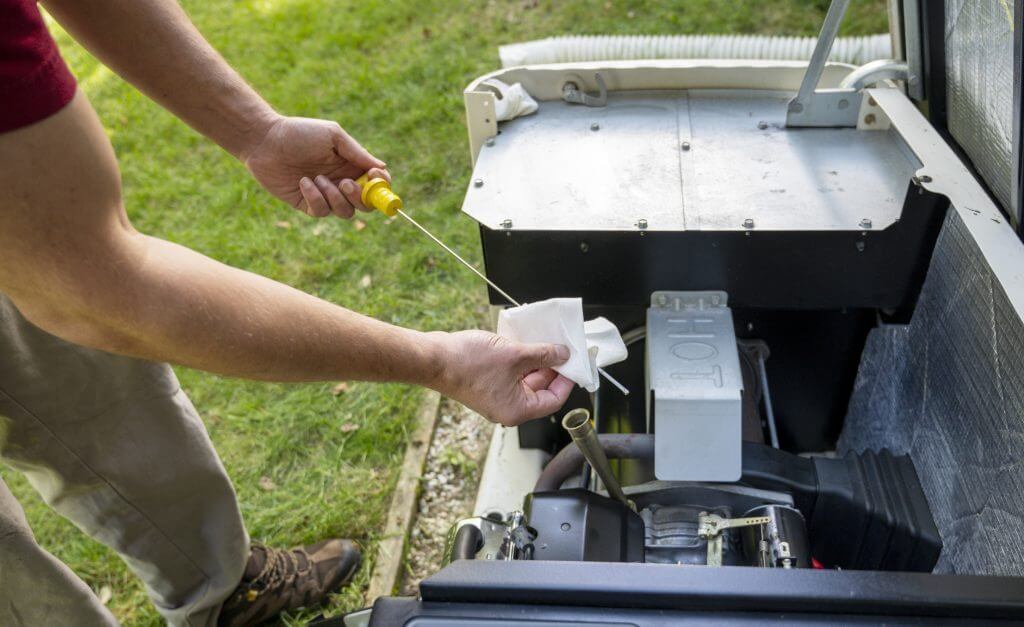
Final Thoughts
A generator is one of the best investments you can make in your home’s comfort and safety, but only if it’s installed correctly. Portable generators can be a straightforward DIY project, but whole-home standby systems should be left to licensed professionals.
With proper installation, a generator can give you years of reliable service, protect your home during outages, and deliver peace of mind in every season.
Compare top-rated generators pros in your area.
Read real homeowner reviews, explore qualifications, and view promotions. Modernize makes it easy to browse professionals and find one that will be perfect for your project.
